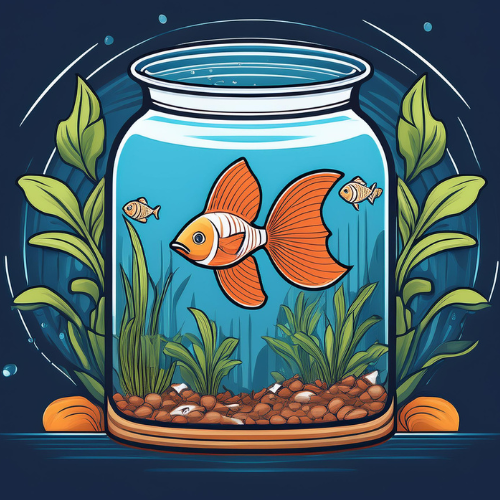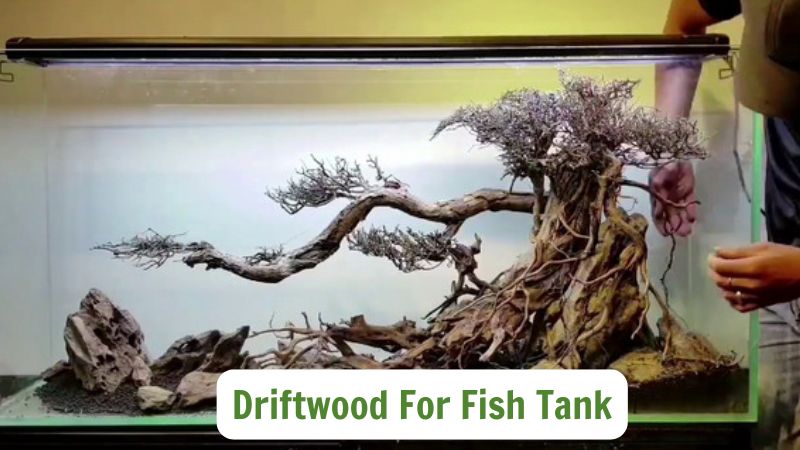Fish Food
Driftwood For Fish Tank: Natural Solution For A Vibrant Fish Tank
Driftwood for fish tank, has become an integral part of aquarium design, not only for the natural beauty it provides, but also for its important functional benefits. With its unique shape and rich structural features, driftwood creates dramatic accents and hiding spaces for fish.
Furthermore, driftwood also helps stabilize the water environment, supports the growth of beneficial microorganisms and reduces the pH of the water. Let’s explore with Fishtankfables the role of driftwood in fish tanks, which not only opens up creative possibilities in decoration but also improves the quality of life for underwater inhabitants.
Why is driftwood for fish tank?
- Create hiding spaces: Driftwood provides areas such as burrows and hidden corners for fish to hide. This helps fish feel safe and reduces stress, allowing them to grow and interact more naturally.
- pH balance: Driftwood has the ability to reduce the pH of water thanks to the organic substances such as tannin it secretes. Stabilizing the pH level helps create an ideal living environment for fish, especially fish species that require a slightly acidic water environment.
- Natural food source: Some types of driftwood release tannins into the water, providing a natural food source for omnivorous fish and microorganisms in the tank. This helps maintain a balanced ecosystem and adds essential nutrients to the tank’s creatures.
- Increase aesthetics: With unique patterns and natural colors, driftwood can create a striking highlight for the aquarium. It helps the fish tank become more lively and attractive, creating a natural and beautiful decorative space.
- Places for beneficial microorganisms to attach: The surface of driftwood provides places for beneficial microorganisms to attach. These microorganisms help filter water and clean fish habitats by decomposing organic waste and maintaining water quality in the tank.

Popular types of driftwood
Popular types of driftwood in aquariums often have unique characteristics and different applications:
- Fir driftwood: Fir driftwood stands out with its bright yellow color and beautiful wood grain. This type of driftwood is very popular thanks to its bright and attractive appearance, easily combined with many aquarium decorations.
- Bonsai driftwood: Bonsai driftwood has a unique shape with winding branches, creating a striking highlight for the aquarium. This type of driftwood is often used to create artistic structures and provide hiding spaces for fish.
- Rhododendron driftwood: Rhododendron driftwood has a warm red-brown color, bringing a warm and cozy feeling to the aquarium. The colors of this driftwood often create harmony and add depth to the aquarium landscape.
- Forest-rooted driftwood: Forest-rooted driftwood has a natural shape with complex branches and roots, close to the natural habitat of fish. This type of driftwood helps create a space similar to a natural habitat, making the aquarium more lively.
- Sea anemone driftwood: Sea anemone driftwood has dark colors and beautiful wood grain, often used to create accents for large fish tanks. With its impressive and luxurious appearance, this driftwood is suitable to highlight the aquarium and attract attention.
Each type of driftwood not only contributes to the aesthetics of the aquarium, but can also meet the specific needs of the tank’s habitat.
How to choose and buy driftwood
When choosing to buy driftwood for your aquarium, you should consider the following factors to ensure quality and aesthetics:
Choose treated driftwood
To ensure driftwood does not contain toxic substances, choose driftwood that has been thoroughly processed. The treatment process usually involves soaking the driftwood in water to remove impurities and bacteria, and remove compounds that can contaminate the water. This helps protect fish health and maintain water quality in the tank.
Choose driftwood with the right shape
Choose driftwood pieces with natural and unique shapes to create a highlight for your aquarium. The shape of the driftwood not only contributes to the beauty of the tank, but also creates hiding spaces and natural habitats for the fish.
Check the hardness
The hardness of the driftwood is an important factor to ensure it does not break or cause scratches to the fish. Choose pieces of driftwood that have moderate hardness, neither too soft nor too hard. Driftwood that is too soft can be easily damaged in water, while driftwood that is too hard can injure fish or damage tank equipment.
Choosing the right driftwood not only helps beautify the aquarium but also contributes to maintaining a healthy living environment for the creatures in the tank.
How to use driftwood in an aquarium
When using driftwood in an aquarium, taking the correct preparation and placement steps will help you maximize its benefits and create an ideal living environment for your fish. Here are detailed instructions:
Soak driftwood before use
Before putting driftwood into the aquarium, you should soak it in clean water for 2-3 days. The soaking process helps remove dirt, bacteria and excess tannins that can contaminate the water and affect the water quality in the tank. Change the water in the soaking bucket daily to clean the driftwood more effectively.
Secure the driftwood
To keep the driftwood from moving or floating in the tank, you need to secure it securely. Use materials such as nylon rope, rocks or supports to keep the driftwood stable. Make sure the driftwood is firmly placed and does not pose a danger to the fish or other tank equipment.
Combine with other materials
To create a lively and natural landscape for the aquarium, you can combine driftwood with other materials such as rocks, sand or aquatic plants. This combination not only enhances the aesthetics of the aquarium, but also creates hiding areas and rich habitat for the fish.
Using driftwood appropriately not only helps beautify the aquarium but also contributes to maintaining a healthy and natural habitat for the creatures in the tank.
Epilogue
Driftwood for fish tank is not only a great decorative element for fish tanks, but also plays an important role in maintaining a healthy habitat for the tank’s creatures. By providing hiding spaces, stabilizing water pH, and providing habitat for beneficial microorganisms, driftwood helps improve water quality and fish health.
When choosing and using driftwood properly, you not only increase the aesthetics of your tank but also create a balanced and harmonious ecosystem. With delicate combination and proper care, driftwood can make your aquarium more lively and attractive than ever.

